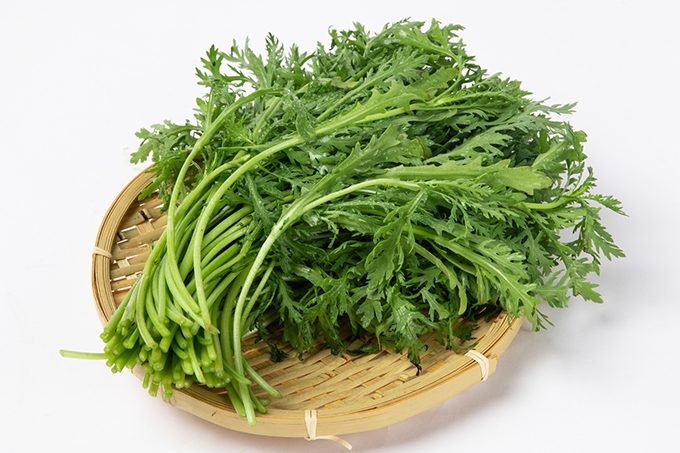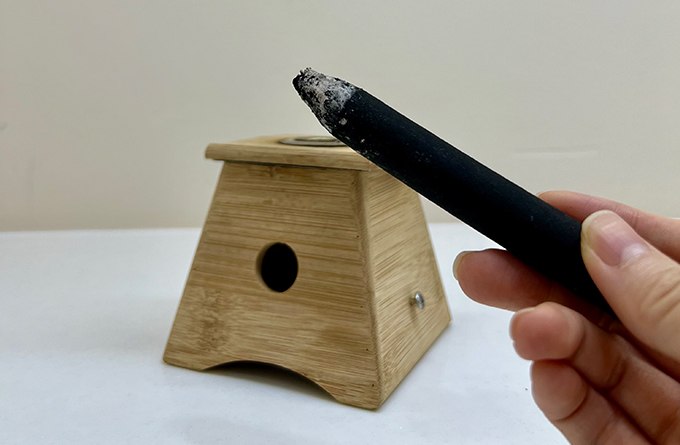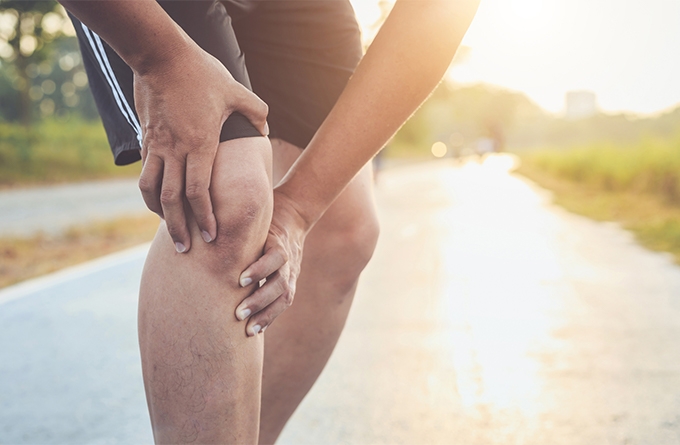Moxibustion is a form of therapy that entails the burning of mugwort leaves. This small, spongy herb is believed to bring several benefits, enhancing healing, strengthening the blood, and stimulating the circulation of Qi to help the body deal with a broad range of health issues.
In fact, moxibustion therapy is often used to complement the Traditional Chinese Medicine (TCM) treatments we provide at Thomson Chinese Medicine. Let us share the various uses for moxa that you may be unaware of.

Moxibustion: what does the process entail?
During moxibustion, the mugwort leaves, or Ai Ye (艾叶), are ground into small sticks or cones called moxa and burned near or on specific acupoints on the body. There are two primary methods for applying the treatment. When used directly, a practitioner will place and ignite the moxa cone on the site of treatment, leaving it to burn slowly. Once the skin starts turning red, they will remove the cone.
Alternatively, the practitioner may place the burning moxa on a stick or use it in conjunction with acupuncture needles to transfer the heat to the acupuncture point. Likewise, they will remove the moxa once the skin turns warm and red. This indirect process is safer and used more often, as the burning moxa does not come into direct contact with the skin.
The different applications of moxibustion therapy
1. Fertility support

In TCM, it is believed that a ‘warm’ uterus is essential to optimal fertility. As moxibustion is nourishing and warming, it is often used to keep the uterus ‘warm’, ensuring adequate nourishment for the fertilised egg, encouraging blood flow delivery to the ovaries for follicle growth and ovulation, and aiding the growth of thick, healthy uterine linings. Moxibustion treatment is often used to treat women with cold body constitution and/or irregular periods. Those undergoing post IVF embryo transfer or the two weeks wait before pregnancy test can also consider moxibustion.
2. Treat menstrual pain
Moxibustion strengthens Kidney Yang, a fundamental aspect of Chinese medicine linked to reproductive vitality and hormonal balance. By nourishing the Kidney Yang, moxibustion helps to fortify the body’s foundational energy, enhancing resilience and supporting the hormonal processes involved in the menstrual cycle and fertility.
The warming nature of moxibustion also serves to dispel Cold from the body, particularly in the lower abdomen and pelvic region. Cold accumulation in these areas can hinder blood flow and Qi circulation, leading to conditions such as menstrual cramps, irregular periods, and fertility challenges. By dispersing cold and promoting warmth, moxibustion helps to alleviate these symptoms and create a more favourable environment for reproductive health.
Moreover, moxibustion is effective in resolving stagnation, which can manifest as menstrual pain, bloating, and emotional fluctuations during the menstrual cycle. By promoting the smooth flow of Qi and blood, moxibustion reduces stagnation, easing discomfort and supporting a more harmonious menstrual cycle.
3. Muscle pain relief

Moxibustion can help address specific muscle pain, especially discomfort with the shoulders and knees. The warming sensation produced by the burning of moxa warms the ligaments and tendons, aiding blood circulation to the treated area. The warmth is also believed to penetrate the skin and reach deeper tissues, relieving tension and reducing pain symptoms. Endorphins – the body’s natural painkillers – are also triggered and released during this process, enabling further pain relief.
4. Address breech presentation
During pregnancy, the infant may sometimes lie bottom first or feet first in the uterus (womb) instead of the usual head-first position, which can make for a challenging delivery. In this scenario, moxibustion can be a suitable alternative treatment to encourage the breech baby to turn their head down and get into a better position for vaginal delivery, reducing the likelihood that the mother will require a C-section for breech presentation.
Moxibustion is typically recommended before the 35th week of pregnancy. At this stage, the baby is still small enough to have room for turning while being sufficiently developed to stay in the head-down position.
5. Treat eczema

In TCM, it is believed that skin health is a direct reflection of the strength of the lung Qi. When there is an imbalance in this organ, it can cause the skin to malfunction, resulting in distressing eczema symptoms.
Moxibustion can be effective for treating types of eczema characterised by Dampness and Cold symptoms, such as weeping eczema (eczema with oozing lesions) and eczema aggravated by exposure to cold or damp environments. By promoting circulation and warming the affected areas, it may help to reduce inflammation, relieve itching, and support the skin’s natural healing processes.
6. Postpartum support
New mothers often find postpartum recovery challenging, as the loss of blood and energy during childbirth, along with the mother’s internal discomfort, can drain overall health. Moxibustion can aid the postpartum recovery through a process called ‘mother warming’, which is meant to facilitate recovery after giving birth. In most cases, this would be done after their one-month confinement period.
Moxibustion provides gentle, penetrating heat that helps to warm the body, particularly the lower abdomen and back. This heat can alleviate pain, reduce discomfort, and promote a sense of well-being. This therapy also has the benefits of reducing stress, calming the mind and body, and boosting energy, thus improving the mother’s overall quality of life.
While moxibustion offers several benefits and a holistic approach to tackling various health issues, it is a good idea to consult a healthcare provider before receiving treatment. To learn more about moxibustion therapy and whether it is suitable for you, contact us to schedule an appointment with our TCM physicians today.
Learn More: The Transformative Effects of Moxibustion on the Body
Physician Tham Yoke Mei
Traditional Chinese Medicine
Thomson Chinese Medicine (TCM Novena Specialist Centre) and 1 other
English, Mandarin
Alliance MediNet

